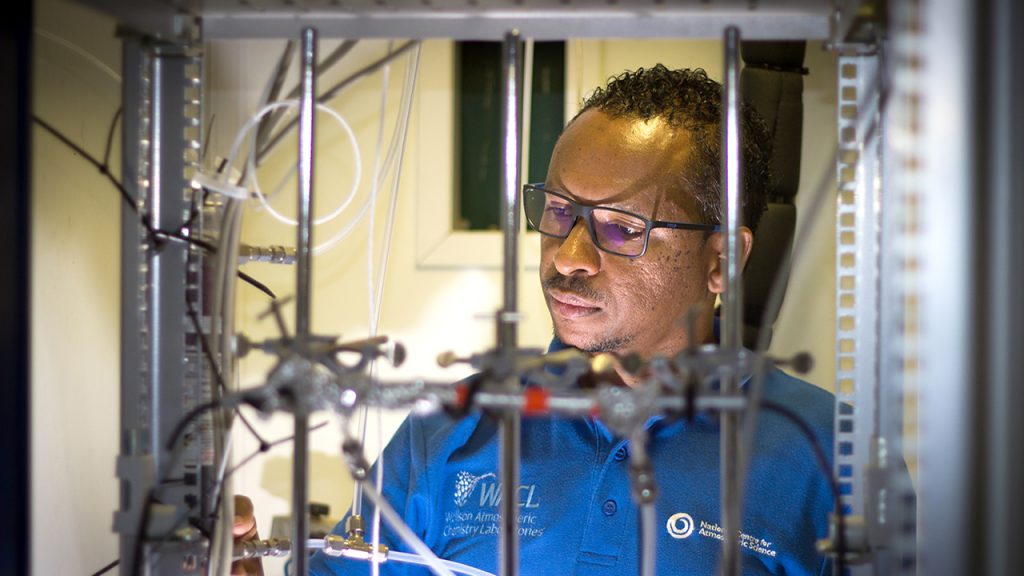
Atlantic observations show ‘self-cleaning’ processes in the marine atmosphere
Scientists have shed new light on the ‘self-cleaning’ capacity of the atmosphere, using observations around the tropical Atlantic Ocean.
The atmosphere’s essential process of ‘self-cleaning’ regulates and removes gaseous pollutants, mainly through production of a chemical species known as the hydroxyl radical (OH). The self-cleaning ability of the marine atmosphere is well-known, but in a new study led by the University York and supported by the National Centre for Atmospheric Science, experts have revealed more about the process.
The team made extensive observations in 2019 and early 2020 around Cape Verde, which lies almost 600km off the coast of Northwest Africa and acts as a natural laboratory – with relatively low concentrations of human emissions.
Scientists were able to hone in on specific chemical reactions that involve reactive nitrogen species, using a combination of airborne and ground-based measurements, and found that the marine atmosphere has a better ability to self-clean than previously understood.
The small island of São Vicente was a useful focal point for research flights using the FAAM Airborne Laboratory because it’s home to one of the most advanced atmospheric observatories in the region, the Cape Verde Atmospheric Observatory.
Both facilities, managed by the National Centre for Atmospheric Science, equipped the scientists with ways to confirm the widespread presence of nitrous oxide – referred to as HONO – in the remote Atlantic troposphere. Results suggested that HONO was formed by “renoxification”, whereby sunlight breaks down aerosol nitrate and returns nitrogen oxides to the atmosphere.
The research team say the findings, published in Sciences Advances, could be highly significant for atmospheric chemistry and will help to address previous uncertainties. Self-cleaning of the marine atmosphere, via renoxification, could have important but yet unexplored implications for concentrations of ozone and greenhouse gases.
Importantly, the observations showed that the efficiency of renoxification increased with relative humidity and decreased with the concentration of nitrate. This observation reconciled the very large discrepancies in the rates of renoxification found across multiple laboratory and field studies. It was also consistent with renoxification occurring on the surface of aerosols, rather than within their bulk, a new and exciting finding with implications for how this fundamental process is controlled and parameterised in models.
Lucy Carpenter, Professor of Atmospheric Chemistry at the University of York
